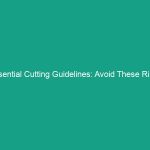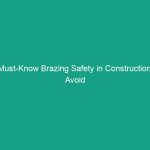Good Morning Team!
Today, we’re going to talk about an incredibly important subject: Essential Respiratory Protection Guidelines: Avoid Critical Risks Today. This topic is vital not just for compliance but for ensuring your Safety and well-being while you work. Respiratory Hazards exist in many forms, and understanding how to protect yourself effectively is crucial for your health and productivity.
Understanding Essential Respiratory Protection
So, what exactly do we mean by respiratory protection? In simple terms, it refers to the use of protective equipment that safeguards your respiratory system from inhaling harmful substances, including dust, fumes, vapors, and gases. Proper respiratory protection is essential in various workplaces, especially in construction, manufacturing, and chemical handling environments.
Ignoring respiratory Safety can lead to severe health consequences, including chronic respiratory diseases and even long-term disability. Many workers believe that they can manage without proper gear or that they can rely on their natural immunity. This misconception can be dangerous! Respiratory protection is not just about compliance; it’s about safeguarding your health.
Key Hazards, Risks, and Safety Considerations
Let’s discuss some of the specific hazards associated with respiratory risks:
- Airborne Contaminants: These include particles, chemicals, and biological agents that can harm your lungs.
- Oxygen-Deficient Environments: Certain areas may have low oxygen levels, making it difficult to breathe.
- Exposure Duration and Concentration: The longer you are exposed to harmful substances, the greater the risk.
Real-world consequences of ignoring these risks are significant. For instance, prolonged exposure to silica dust can lead to silicosis, a debilitating lung disease. Similarly, working with chemicals without proper protection can result in severe respiratory conditions, even leading to hospitalization or worse.
Best Practices, Procedures, & Actionable Advice
Now that we understand the risks, let’s look at some Best Practices for respiratory protection:
1. Assess the Risks
Before starting any job, assess the Environment. Identify potential respiratory hazards and determine the level of risk. This includes checking Material Safety Data Sheets (MSDS) for chemicals you may encounter.
2. Select the Appropriate Respirator
Not all respirators are created equal. Depending on the nature of the hazard, you may need:
- Dust Masks: For low-level dust exposure.
- Half Masks: For fumes and vapors.
- Full-Face Respirators: For high exposure to Toxic Materials.
3. Proper Fit Testing
It’s crucial that your respirator fits properly. A poorly fitting mask can lead to leakage, rendering it ineffective. Make sure to undergo fit testing before using any respirator.
4. Regular Maintenance and Inspection
Inspect your respirator regularly for wear and tear. Clean and maintain it according to the manufacturer’s instructions to ensure it functions correctly.
5. Training and Awareness
Participate in Training sessions that cover the correct use of respiratory protection. Understanding how to wear and maintain your equipment is key to your safety.
Case Study: Real-World Incident
Let’s take a look at a brief case study. In a manufacturing facility, several workers experienced respiratory issues after failing to wear appropriate respirators while working with hazardous chemicals. The company faced severe penalties, and the affected employees required medical treatment. This incident highlights the importance of adhering to respiratory protection protocols.
Regulations, Standards, and Compliance
It’s also important to be aware of relevant Regulations governing respiratory protection:
- OSHA Respiratory Protection Standard (29 CFR 1910.134): This standard outlines the requirements for respiratory protection programs in the workplace.
- NIOSH Certification: Ensure that any respirators used are certified by the National Institute for Occupational Safety and Health (NIOSH).
Compliance with these Standards is critical not only for legal reasons but also to protect you and your colleagues from potential hazards.
Employee Engagement & Discussion
Now that we’ve covered the essentials, let’s open the floor for discussion. Here are a few questions to consider:
- What safety challenges have you encountered related to respiratory protection?
- Do you feel confident in identifying when you need to use respiratory protection?
- What suggestions do you have for improving our respiratory safety practices?
Your input is valuable, and sharing experiences can help us all learn and improve our safety culture.
Conclusion & Key Takeaways
In conclusion, understanding and implementing Essential Respiratory Protection Guidelines is vital in avoiding critical risks in the workplace. Remember:
- Assess your environment for respiratory hazards.
- Select the right respirator for the job.
- Ensure a proper fit and conduct regular maintenance.
- Engage in ongoing training and discussions about safety.
Prioritizing these practices not only keeps you safe but also fosters a culture of safety within our team. Thank you all for your attention and commitment to Workplace Safety. Let’s stay safe and look out for one another!


